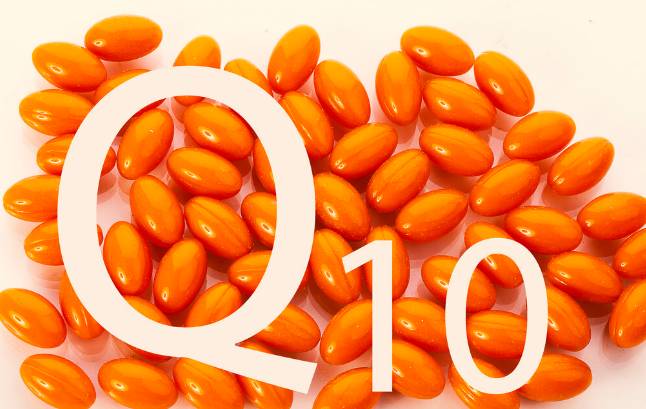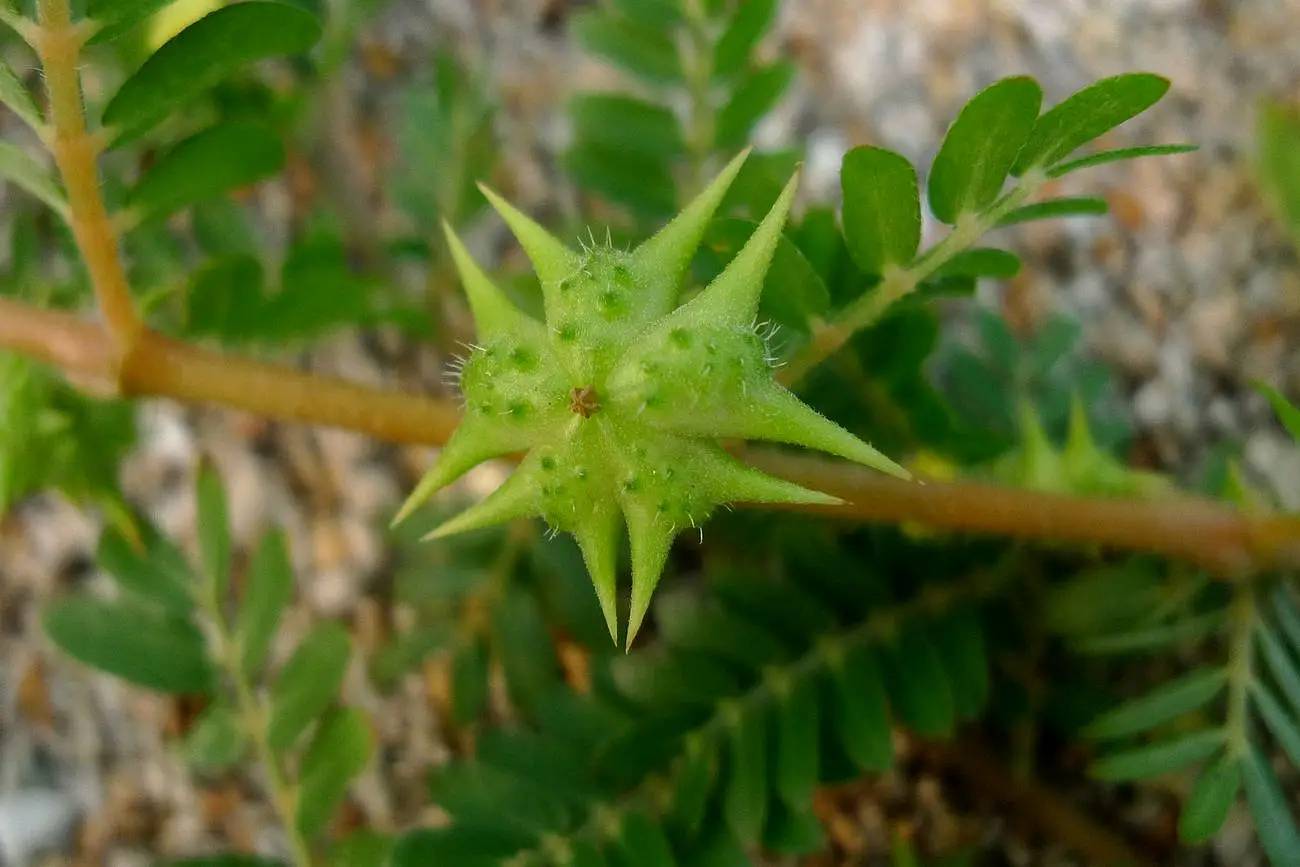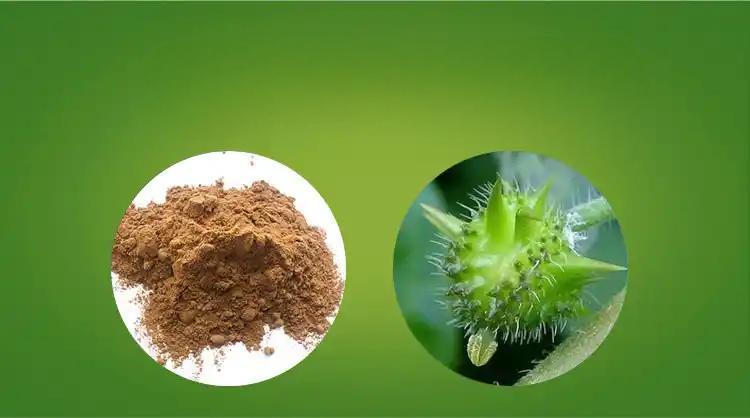What Is the Uses of Tribulus Extract in Sports Nutrition?
In the sports nutrition market, the mainstream products that regulate the synthesis and secretion of testosterone in the human body have always been metabolic precursors of various androgens or metabolites that have different effects. In recent years, with the continuous improvement of doping detection research and technological level, these substances have either been included in the IOC's list of banned substances or are likely to produce positive results in doping tests. Therefore, the mainstream products currently on the market are mostly plant extracts, Chinese herbal formulas or combinations of several plant extracts from traditional medicine. Among them, products based on Tribulus terrestris (L.) saponins or Tribulus terrestris extracts have become one of the mainstream products for regulating testosterone synthesis in athletes. There are thousands of brands, and prices vary greatly. They are widely used by bodybuilding and muscle building athletes and athletes in most other competitive sports during training.
Tribulus terrestris extract products are evaluated and used rationally by studying the traditional medical applications of Tribulus terrestris, modern chemical and pharmacological research, modern clinical application mechanism research, and sports training application research, focusing on the application mechanism and application effect of Tribulus terrestris in sports training.
1. Source, distribution and chemical composition of Tribulus terrestris
1.1 Source and distribution Tribulus terrestris (L.) is a widely used herbal medicine in many countries. It is an annual vine that is widely distributed in Central Europe, Africa, the Americas, India, and China, and is found in tropical and temperate regions around the world, growing mostly on wastelands and field margins. It is found throughout China, mainly north of the Yangtze River, and the medicinal herb is the hard, dry, ripe fruit of Tribulus terrestris (Fructus Tribuli), which is mainly produced in Henan, Hebei, Shandong, Anhui, Shaanxi, Shanxi and other places [1].
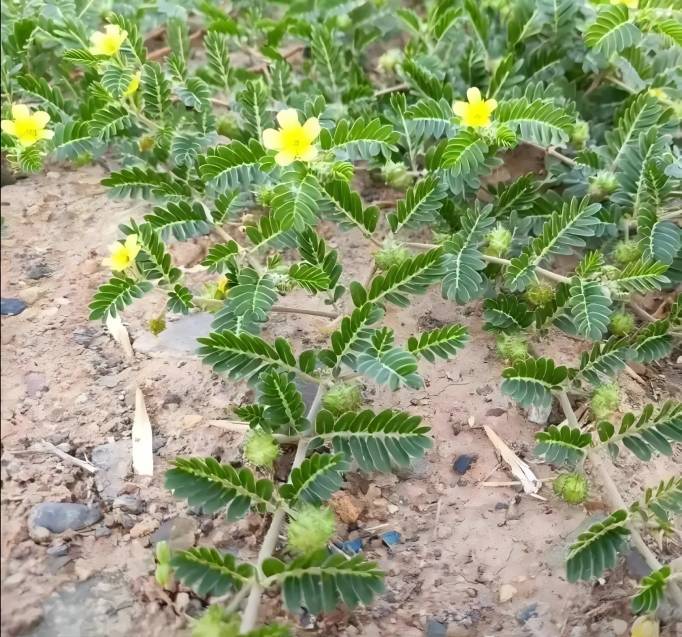
1.2 Effective constituent parts: Tribulus terrestris is characterized by its high content of steroidal saponins. However, due to differences in geographical location, the composition and content of steroidal saponins vary greatly. For example, Protodioscin, one of the steroidal saponins, has been reported in foreign countries [2] to be present in quantities of 0.245% - 1∙337% in Tribulus terrestris plants from Bulgaria, and absent or present in lower quantities in Tribulus terrestris plants from China, about 0.063% - 0.089%, and Tribulus terrestris plants harvested in India contain even lower amounts of protodioscin, about 0.024%. There have been no reports in China comparing the content of this compound in samples collected from different regions. Generally, the total saponin content is used as the quality standard for the extract.
Tribulus terrestris has a variety of active chemical ingredients. Currently, there are two general types of claims for active chemical ingredients in sports nutrition supplements on the market. One is protodioscin, and the other is total saponins in Tribulus terrestris L extracts.
In recent years, research on Tribulus terrestris has continued to deepen, and chemical components such as flavonoids, alkaloids, organic acids, polysaccharides and steroidal saponins have been isolated from the plant. Among these, steroidal saponins have been studied more, and steroidal saponins are the main active ingredients of Tribulus terrestris. The steroidal saponins contained in Tribulus terrestris are divided into two categories: spirostanol and furostanol [3]. Spirostanol, such as diosgenin, has a high content, is less polar, and is easy to crystallize; furostanol, such as protodioscin, has a lower content, more water-soluble and less likely to crystallize. Currently, there are many reports on the pharmacological effects of tribulus terrestris total saponins, but fewer on their individual components.
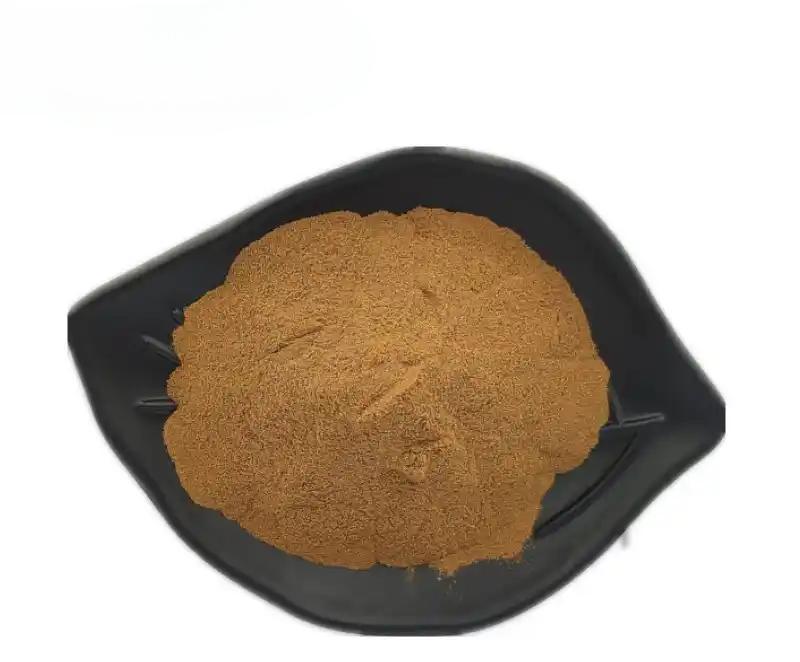
2 Pharmacological effects of tribulus terrestris saponins and tribulus terrestris extracts
2.1 Effects on the cardiovascular system
The pharmacological effects of tribulus saponins on the cardiovascular system include [4]: (1) the protective effect of total tribulus saponins on myocardium subjected to hypoxia and reoxygenation and ischemia and reperfusion. Myocardial tissue is particularly sensitive to free radical damage. Zhang Xiaodan et al. [5] studied the protective effect of Tribulus terrestris extract on myocardial mitochondrial damage caused by adriamycin (ADR) in rats. The medium and high dose groups (30 mg/kg, 45 mg/kg) of Tribulus terrestris extract can reduce the damage to the ultrastructure of myocardial cells, elevating the membrane potential of myocardial mitochondria and the activity of glutathione peroxidase (GSH-Px), significantly reducing the damage to myocardial mitochondria caused by ADR in rats, and protecting against the cardiotoxicity of ADR.
Pharmacological and clinical studies have consistently shown that tribulus terrestris saponins can improve heart function and reduce the area of myocardial infarction. They can also reduce symptoms such as chest tightness, shortness of breath, and palpitations in people with old myocardial infarction and abnormal left ventricular function, and increase left ventricular systolic function and blood ejection volume. This effect may be related to improving the body's endogenous antioxidant capacity and reducing lipid oxidation [6-8]. (2) Tribulus terrestris total saponin can relieve the symptoms of angina pectoris, prolong the interval between angina pectoris attacks, and reduce the number of angina pectoris attacks. It has the effect of widening the coronary artery and improving coronary circulation. (3) Tribulus terrestris total saponins can reduce blood viscosity, improve the deformability of red blood cells, disaggregate red blood cell aggregation, inhibit platelet aggregation, and reduce the effect of fibrinogen, thereby improving cerebral artery blood circulation and promoting blood supply, and have a good therapeutic effect on the sequelae of cerebral atherosclerosis and cerebral thrombosis [9]. (4) Tribulus terrestris total saponins show varying degrees of inhibitory effects or trends against arterial thrombosis, venous thrombosis, and cerebral thrombosis, and have an anti-thrombotic effect. (5) Tribulus terrestris total saponins have a very good protective effect against cerebral ischemia.
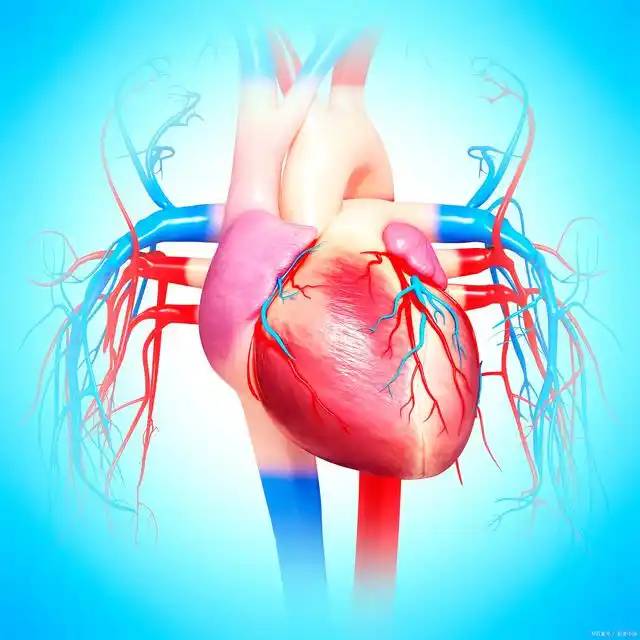
2.2 Lipid-lowering effect
A mouse model of hyperlipidemia induced by a high-fat diet was used to study the effect of tribulus terrestris saponins on regulating blood lipids [9]. The study showed that tribulus terrestris saponins can reduce the serum total cholesterol (TC), low-density lipoprotein cholesterol (LDL-C) and liver cholesterol, the content of triglycerides, and when tribulus terrestris saponins are gavaged while continuing to feed a high-fat diet, it can effectively reduce the content of serum cholesterol and triglycerides and increase the activity of liver superoxide dismutase (SOD). In clinical trials [10], tribulus terrestris saponins have been shown to regulate blood lipids. It can lower serum triglycerides and low-density lipoprotein cholesterol, increase the HDL/LDL ratio, raise the lecithin/cholesterol ratio, and prevent lipids from depositing in the arteries, heart, and liver.
2.3 Anti-fatigue and strengthening effects
Anti-fatigue experiments were conducted using rats [11], and the results showed that total tribulus terrestris saponins can prolong the swimming time of rats, showed an anti-fatigue effect. When mice were fed tribulus terrestris total saponins, it was found that they could enhance the tolerance of mice in high temperature, low temperature and anoxic environments, and prolong the swimming time of mice. It can reduce the content of vitamin C in the adrenal glands of rats, and this effect is no longer reproduced after the adrenal glands are removed. Intraperitoneal injection of Tribulus terrestris total saponins can inhibit the “depletion” of mice caused by injection of a large dose of hydrocortisone, and can also alleviate the decrease in vitamin C in the adrenal glands of rats under stress. This shows the “two-way regulation” effect of Tribulus terrestris total saponins, which can protect the adrenal cortex from functional failure. This strengthening effect is similar to that of ginseng. In an observation of the effects of the sports nutrition product Tribulus on athletes (1999, unpublished data), the authors also found that compared with the placebo control group, the athletes using Tribulus had a lower decrease in the testosterone-to-cortisol ratio T/C, which is consistent with the results of the above animal experiments.
2.4 Research on the reproductive pharmacological effects of Tribulus terrestris extract
2.4.1 Effects on reproductive function [4,12,13]
Domestic and foreign scholars have found that tribulus terrestris total saponins affect sexual function mainly in the following ways: (1) they can promote sperm production, increase libido, promote estrus in female rats, improve reproductive ability, and are non-toxic and non-teratogenic; (2) they have the effect of gonadotropin, The mechanism of action may be to stimulate the hypothalamus to release gonadotropin-releasing factor, which then acts through the anterior pituitary gland. (3) Effect on sperm formation: It can effectively increase the number of spermatogonia, spermatocytes and sperm cells in mice, and the number of Sertoli cells (Serto1i) involved in sperm formation also increases. (4) Effect on sperm viability: Tests have shown that the time to inactivation of sperm in the treated group of animals is 67% longer than in the control group, and there is a varying degree of improvement in the animals' lack of sexual desire and delayed response. Clinical studies have also found that tribulus terrestris total saponins can increase sperm count and motility and enhance ovarian function, a conclusion that is consistent with the results of animal tests. It is used clinically to treat hyposexuality and infertility, and can prevent menopausal syndrome.
2.4.2 Effect on reproductive endocrine
Tribulus terrestris has long been used in traditional medicine as a herbal medicine that stimulates libido. In 2002 and 2003, K. Gauthaman et al. in Singapore [14,19] studied normal and castrated male SD rats that were given Protodioscin, a single component of Tribulus terrestris extract, by gavage, demonstrated that protodioscin in Tribulus terrestris extract is the active ingredient that enhances libido and improves sexual function. In 2005 [15], they used SD male rats to measure the immunoreactivity of NADPH dehydrogenase and androgen receptors in hypothalamic nerve tissue sections after 8 weeks of 5 mg/kg Tribulus terrestris extract administration by gavage. respectively, which was 67% and 58% higher than the blank control group, indicating that Tribulus terrestris extract increases libido by increasing androgen production. However, in their study, they did not directly measure changes in plasma androgen levels, but speculated that Tribulus terrestris may play the above role by increasing androgens or protodioscin, which may be metabolized into dehydroepiandrosterone in the body.
Therefore, in 2008, K. Gauthaman et al. conducted further research [16] and used an intravenous injection of tribulus terrestris extract in primates as an acute experiment, and an 8-week chronic experiment in which rabbits and rats were administered tribulus terrestris extract orally to measure the levels of testosterone (T), dihydrotestosterone (DHT), and dehydroepiandrosterone (DHEA) in the blood plasma. all three androgens were significantly increased in primates (T (52%), DHT (31%) and DHEA (29%) at a dose of 7.5 mg/kg), dihydrotestosterone was significantly increased in rabbits and testosterone was significantly increased in rats. The active ingredient is protodioscin. However, studies have found that Tribulus terrestris living in different environments does not necessarily contain this active ingredient [2,17].
However, in recent years, some animal experiments and clinical studies have confirmed that Tribulus terrestris extract has the pharmacological effect of increasing libido and reproduction, but it does not increase the secretion of luteinizing hormone (LH) and testosterone (T). First, Neychev et al. from Bulgaria [18] conducted an experimental study in which young men aged 20-36 used Tribulus terrestris extract for 4 weeks. no increase in luteinizing hormone (LH) and testosterone (T) was observed in the blood, and it was concluded that Tribulus terrestris extract has neither a direct nor an indirect effect on increasing luteinizing hormone (LH) and testosterone (T). Martino-Andrade A.J. et al. from Brazil [19] conducted an experimental study in which SD male and female rats were given Tribulus terrestris extract for 28 days. no changes in blood testosterone (T) or dehydroepiandrosterone (DHEA) were observed. There is also considerable discussion on some websites that Tribulus terrestris extract has no effect on luteinizing hormone (LH) and testosterone (T) in circulating blood.
Based on the author's previous observation of the effects of athletes using Tribulus terrestris extract and the observation and comparison of the effects of athletes using different brands of Tribulus terrestris extract products in the past 10 years, the author believes that when comparing the results of the different studies published above, three issues should be considered: (1) the quality of the Tribulus terrestris extract used: it should be a standard extract containing 20% or 40% protodioscin, and the total saponin content or diosgenin content should not be used as the standard; (2) the source of the Tribulus terrestris extract used: It is generally considered that Tribulus terrestris extract from regions with higher levels of protodioscin is better. (3) Dosage: 750–1500 mg/day (for humans) or 10 mg/kg (for animals) of a standard extract with more than 20% protodioscin is better. Regarding the expected effect of human use, due to the body's own endocrine regulatory function and the effect of exercise on the endocrine regulation of athletes, there are objectively uncertain results in human use observations. At the same time, these uncertain results themselves show that the research on the effect of Tribulus terrestris extract on animal or human reproductive endocrine is not very sufficient. Even if there is a certain positive effect, the degree of action is also easily affected by the overall state of the body.
3 Research on the application of Tribulus terrestris extract in sports training
3.1 Animal experiments
Liu Sheqin's research [20] showed that Tribulus terrestris extract has strong anti-lipid peroxidation, free radical scavenging and endocrine system regulation effects, and can improve some of the adverse effects of exercise training on the body, improving the running ability of rats on a treadmill. The effects are as follows: (1) significantly extending the time until exhaustion during treadmill running, has an anti-fatigue effect; (2) can effectively inhibit exercise training caused by a decrease in hemoglobin levels in rats, enhance liver and muscle glycogen content; (3) exercise training caused by a certain degree of damage to the body organs have a protective effect, can reduce exercise training on the liver, heart muscle and other tissue damage; (4) reduce the rate of protein catabolism in the body of rats, reduce the body's stress on the intensity of exercise;
(5) It increases the blood testosterone level of rats undergoing exercise training, alleviating the decline in blood testosterone, and has a certain regulatory effect on other hormones such as insulin, glucagon, growth hormone, and cortisol.
3.2 Human experimental research
Ma Lanjun studied the use of tribulus terrestris by 24 CBA basketball players [21], supplementation with tribulus terrestris can reduce the resting heart rate and serum creatine kinase of CBA basketball players, improve hemoglobin and the testosterone/cortisol (T/C) ratio, and supplement tribulus terrestris is beneficial for improving the physical function level and athletic performance of CBA men's basketball players.
Rogerson et al. [22] observed the effects of tribulus extract on elite rugby players during the first five weeks of the season. The athletes' strength, body composition, and urine T/E ratio were tested before and after the experiment, and no significant changes were observed in any of the indicators. The results did not agree with the manufacturer's claims.
Antonio [23] and others supplemented young men with tribulus extract during strength training for 8 weeks, but again, no significant changes were found in body weight, strength, or body composition.
References:
[1] Huang Taikang. Modern Herbal Dictionary [M]. Beijing: China Medical Science and Technology Press, 2001: 1548.
[2] Ganzera M, Bedir E, Determination of steroidal saponins in Tribulus terrestris by reversed-phase high-performance liquid chromatography and evaporative light scattering detection [J]. XJ Pharm Sci, 2001, 90 (11): 17522-17581.
[3] Chu Shudi, Qu Weijing, Li Mu. Research progress on the chemical constituents and pharmacological effects of Tribulus terrestris [J]. Chinese Wild Plant Resources, 2003, 22 (4): 4-6.
[4] Li Junling. Overview of chemical and pharmacological research on tribulus terrestris saponins [J]. Journal of Traditional Chinese Medicine, 2006, 24 (8): 1509-1511.
[5] Zhang Xiaodan. Protective effect of Tribulus terrestris extract on myocardial mitochondrial damage caused by ADR in rats [J]. Chinese Patent Medicine, 2009, 31 (2): 198-202.
[6] Cheng Chun, Xu Jimin. Experimental study on the effect of Tribulus terrestris against myocardial hypoxia and reoxygenation injury [J]. Journal of Shanghai Second Medical University, 1993, 13(2): 174-176.
[7] Qu Xian, Liu Jianping. Effect of Tribulus terrestris total saponin on changes in serum SOD and MDA in rabbits with AMI [J]. Chinese Journal of Pathological Physiology, 2001, 17 (11): 1055.
[8] Wang Xueyun, Li Hong. Protective effect of tribulus saponins on cerebral ischemia-reperfusion injury in rats [J]. Chinese Pharmacology Bulletin, 2005, 22 (1): 26-28.
[9] Chu Shudi. The effect of tribulus terrestris saponins on hyperlipidemia [J]. Traditional Chinese Medicine, 2003, 26 (5): 341-344.
[10] Chen Huimin. Clinical observation of 29 cases of heart and brain relaxation and anti-aging [J]. Practical Geriatrics, 1993, 7 (3): 140.
[11] Cao Huiling, Chen Haohong, Xu Shikai. Progress in pharmacological and clinical research on Tribulus terrestris and its active ingredients [J]. Chinese Patent Medicine, 2001, 23 (8): 602-605.
[12] Wang Y. Research overview of the pharmacological effects and chemical constituents of Tribulus terrestris. Journal of Beijing College of Traditional Chinese Medicine, 1989, 12(6): 30-33.
[13] Qian B Y. Research overview of Tribulus terrestris. Chinese Patent Medicine, 1990, 12(1): 34.[14]K.Gauthaman,P.G..Aphrodisiac properties of Tribulus Terrestris ex- tract(Protodioscin)in normal and castrated rats[J].Life Sciences, 2002,71(12):1385-1396.
[15]K.Gauthama,Effect of Tribulus terrestris on nicotinamide adenine dinu- cleotide phosphate -diaphorase activity and androgen receptors in rat brain[J].Journal of Ethnopharmacology ,2005,96(1-2):127-132.
[16]K.Gauthaman,The hormonal effects of Tribulus terrestris and its role in the management of male erectile dysfunction-an evaluation using pri- mates,rabbit and rat[J].Phytomedicine,2008,15(1-2):44-54.
[17]Adimoelja A.,Phytochemicals and the break through of traditional herbs in the management of sexual dysfunctions[J].Int J Androl.,2000,23 (suppl2):82-84.
[18]V.K.Neychev,The aphrodisiac herb Tribulus terrestris does not influ- ence the androgen production in young men[J].Journal of Ethnopharma- cology ,2005,101(1-3):319-323.
[19]K.Gauthaman,Sexual effects of puncturevine(Tribulus terrestris)ex- tract(protodioscin):an evaluation using a rat model[J].J Altern Com- plement Med.,2003,9(2):257-265.
[20]Martino -Andrade AJ,Spercoski KM,Effects of Tribulus terrestris on endocrine sensitive organs in male and female Wistar rats[J].Journal of Ethnopharmacology ,2010,127(1):165-170.
[21] Liu Sheqin. Experimental study on the effect of Tribulus terrestris extract on blood biochemical indicators, hormone levels and free radical metabolism in rats trained for sports [D]. Master's thesis, Shaanxi Normal University, 2004.
[22] Ma Lanjun. The effect of supplementing tribulus terrestris saponins on the physiological functions and certain biochemical indicators of CBA male basketball players [J]. Shizhen National Medicine, 2009, 20 (2): 387-389.
[23]Rogerson S ,Riches CJ,The effect of five weeks of Tribulus terrestris supplementation on muscle strength and body composition during presea- son training in elite rugby league players.J Strength Cond Res.2007,21 (2):348-353.


 English
English French
French Spanish
Spanish Russian
Russian Korean
Korean Japanese
Japanese
